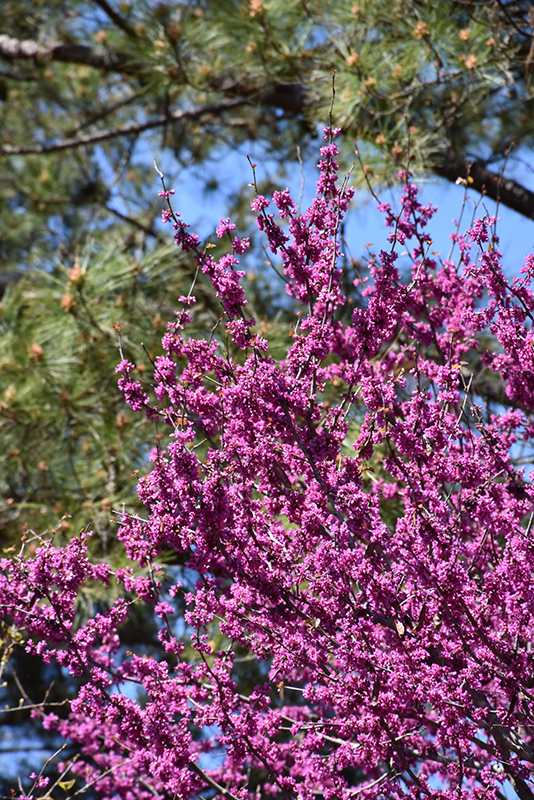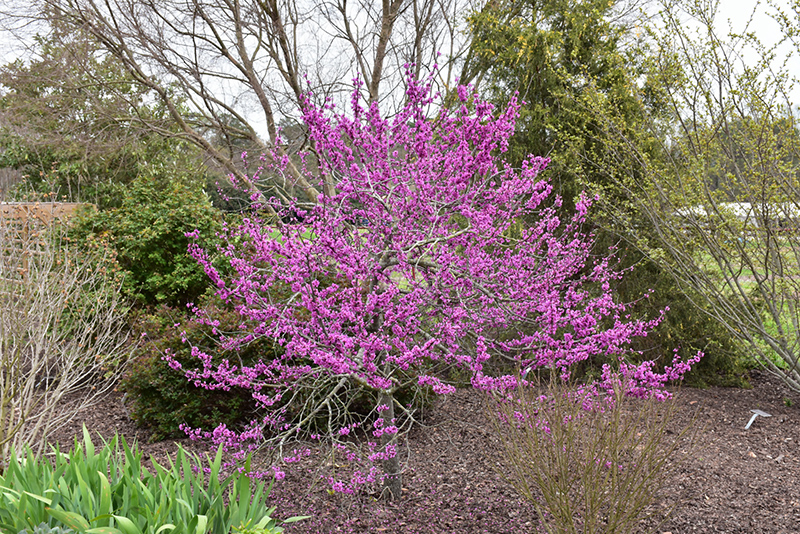Oklahoma Redbud
Cercis canadensis 'Oklahoma'
Height: 15 feet
Spread: 15 feet
Sunlight:
![]()
![]()
Hardiness Zone: 6a
Other Names: Texas Redbud, Cercis canadensis var. texensis
Description:
A wonderful small accent tree with beautiful magenta-wine colored flowers in early spring, followed by thick, glossy dark-green leaves; adaptable to drier soils; older dark brown bark exfoliates to reveal orangish inner bark; a more compact redbud
Ornamental Features
Oklahoma Redbud has hot pink pea-like flowers with dark red overtones along the branches from early to mid spring before the leaves. It has dark green deciduous foliage. The small glossy heart-shaped leaves turn yellow in fall. The peeling dark brown bark adds an interesting dimension to the landscape.
Landscape Attributes
Oklahoma Redbud is a deciduous tree with a more or less rounded form. Its relatively coarse texture can be used to stand it apart from other landscape plants with finer foliage.
This is a relatively low maintenance tree, and should only be pruned after flowering to avoid removing any of the current season's flowers. It is a good choice for attracting birds to your yard, but is not particularly attractive to deer who tend to leave it alone in favor of tastier treats. It has no significant negative characteristics.
Oklahoma Redbud is recommended for the following landscape applications;
- Accent
- Mass Planting
- General Garden Use
Planting & Growing
Oklahoma Redbud will grow to be about 15 feet tall at maturity, with a spread of 15 feet. It has a low canopy with a typical clearance of 3 feet from the ground, and is suitable for planting under power lines. It grows at a medium rate, and under ideal conditions can be expected to live for 60 years or more.
This tree does best in full sun to partial shade. It is very adaptable to both dry and moist locations, and should do just fine under average home landscape conditions. It is not particular as to soil type or pH. It is highly tolerant of urban pollution and will even thrive in inner city environments, and will benefit from being planted in a relatively sheltered location. Consider applying a thick mulch around the root zone in winter to protect it in exposed locations or colder microclimates. This is a selection of a native North American species.



